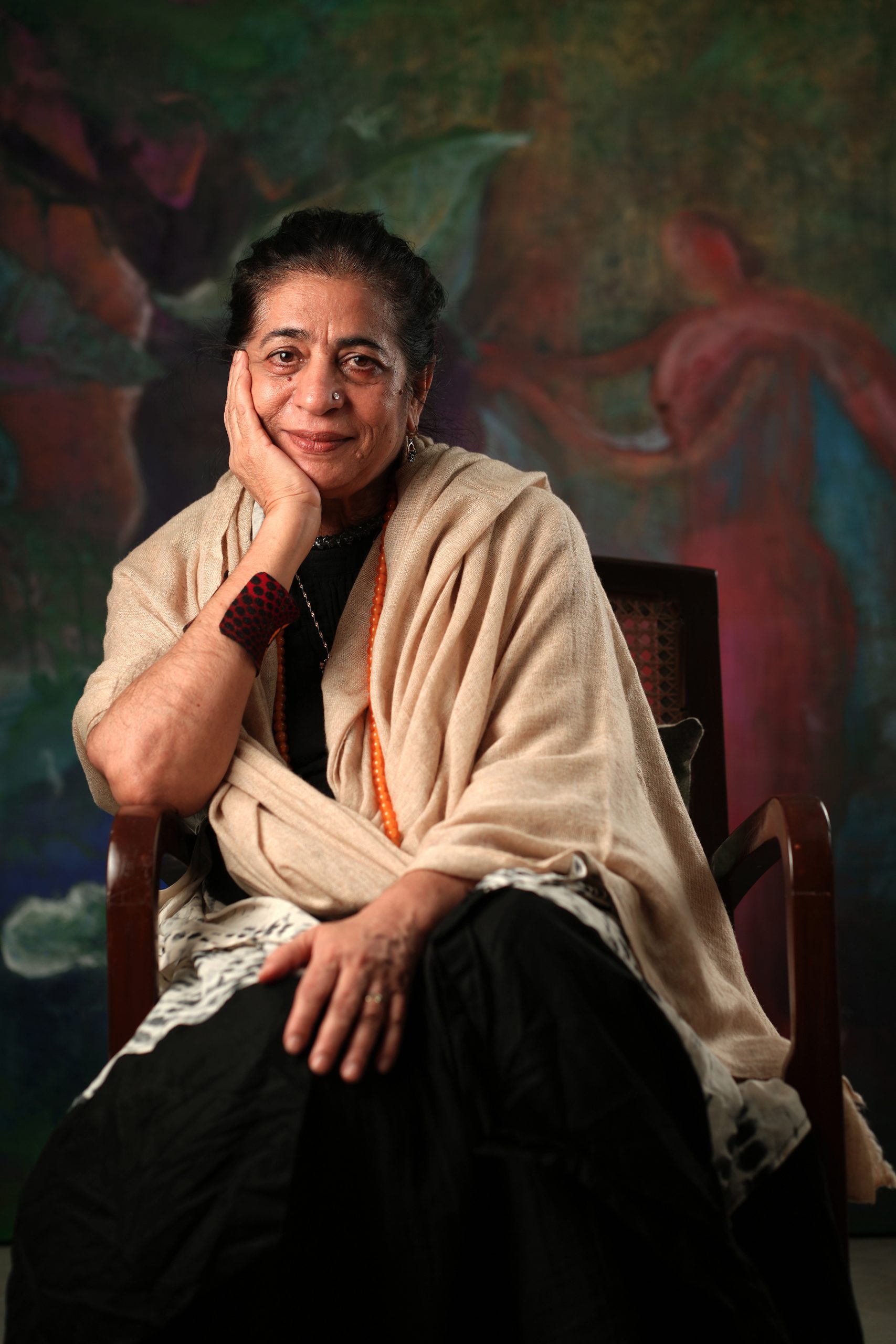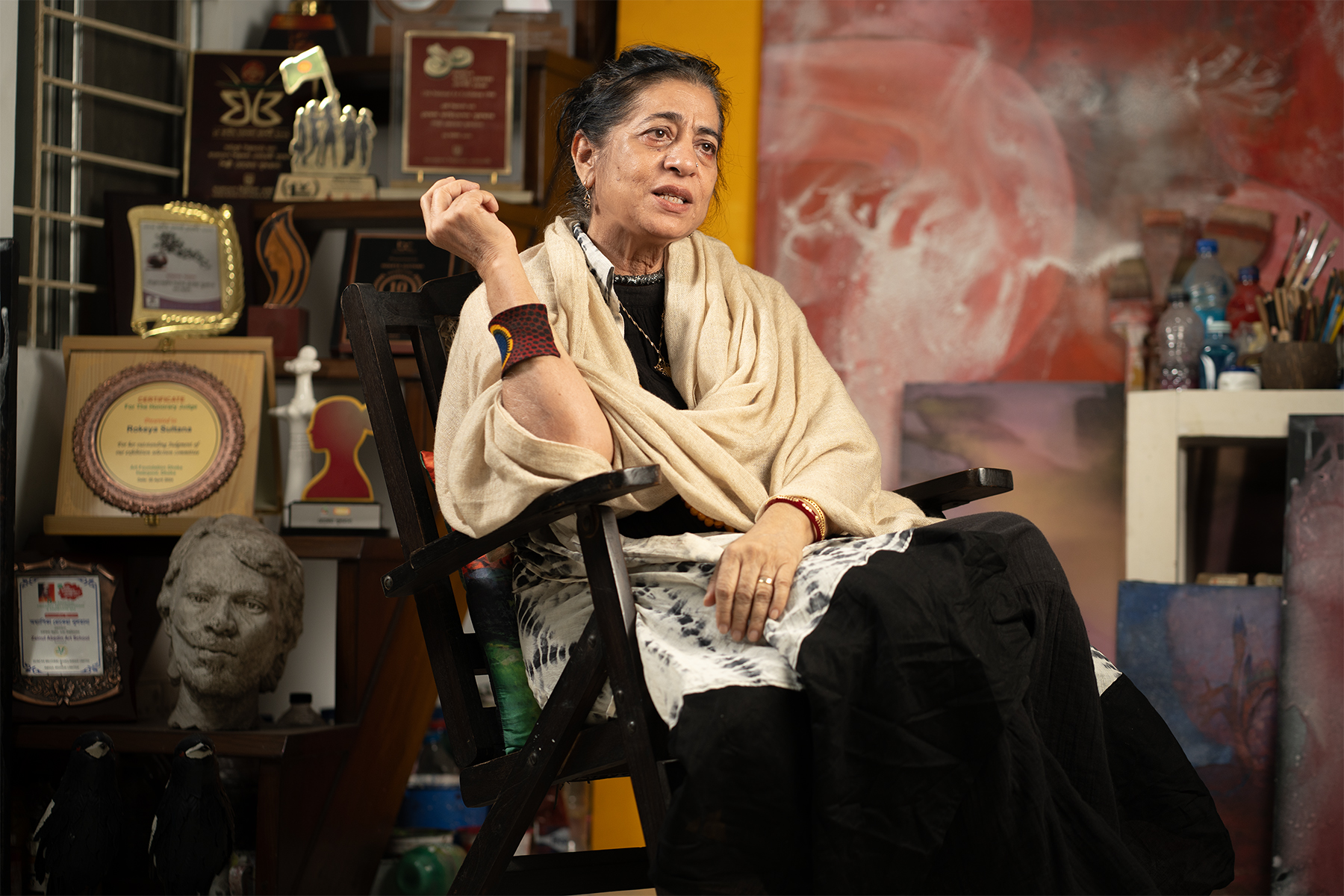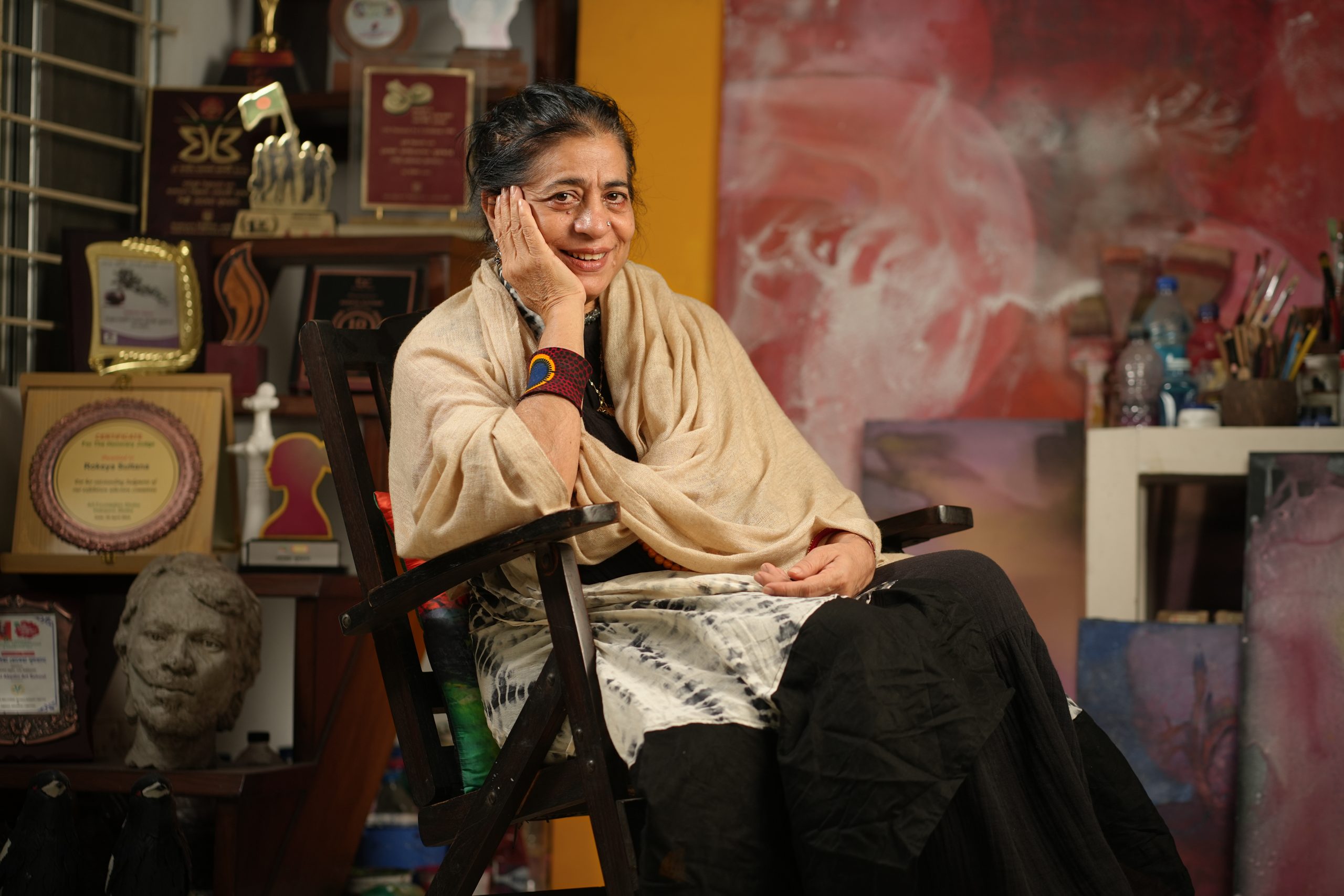
In conversation with Rokeya Sultana
Rokeya Sultana is a celebrated Bangladeshi artist of international acclaim, with recognition in the 9th Asian Biennale and National Art Exhibition, Dhaka; the 3rd Bharat Bhaban Biennale, India; a residency scholarship at L’atelier Laouriere et Frelaut, Paris. Maintaining studios in Dhaka and Sydney, she is an influential figure in the Shantiniketan, Dhaka and Sydney art scenes. Sultana is a Fulbright Fellow, who has had her work exhibited in Poland, Germany, Morocco, Oman, France, Iran, Egypt, Turkey, Taiwan, Nepal, Korea, Denmark, Pakistan, India, the United States of America, and Japan, among other countries.
While primarily known for printmaking, she has worked with various mediums throughout her formative years, and continues to experiment with new forms, including sculpture, even today. I accompanied the ICE Today team on their visit to Studio Rokeya Sultana, for a conversation with the artist, shortly after the news broke of her receiving the Ekushey Padak, the second highest civilian award in Bangladesh.
Congratulations on your big win! How are you feeling?
Thank you, I am quite excited. I don’t know how one may take it when I say this, but awards, I’ve received many, and that’s wonderful, but when your country acknowledges you, when there is a state-level recognition, as an artist, as a woman, it really feels like an accomplishment.
We tend to do things a certain way, and follow a certain path, and anyone who goes against this, who swims against the current, so to speak, faces a lot of resistance. At times, I have felt like maybe I wasn’t created for this world.

For a relatively young country, Bangladesh has produced a lot of internationally acclaimed artists…
Oh, so many! Aside from the bigger names that you know, as a teacher, and also with my travels and residencies, I’ve come across so many talented Bangladeshi artists that don’t have much renown here because of a lack of coverage, but are doing well in various countries abroad.
I do want to say that I think the selection committee [for the Ekushey Padak] should consider awarding more artists. There have been quite a few years where no artist has received any. But great art is being produced every year. I think we can make space to recognise this.
I have to acknowledge the good work Bengal is doing in promoting the arts. The Bengal Foundation Gallery has provided me a lot of support, not just by providing a beautiful space to showcase my art, but the invaluable help that comes from a proper catalogue of my work, and the beautiful presentation of the Rokeya Sultana art book, produced by Bengal Publications. These are things that us artists would otherwise have to figure out on our own, and not everyone has the resources. Many of us who got a platform at Bengal, went on to do very well on the global arena, and I feel like there ought to be more such platforms to give our very talented artists a fair chance at getting their work shown.
Women in particular, need more support, more equity. They are restricted from all directions in every field. Even women like you or I, who come from backgrounds of privilege, have had to navigate many social barriers. It is even harder for women who don’t have a strong financial or educational background.
These themes – the female desire for freedom, often come out in your work, be it your ‘Relations’ series, with the winged female form, or the ‘Madonna’ series, that places the iconic Madonna figure in the context of the everyday woman. You find the political in the personal.
Precisely. If you think about our female garment workers, these young girls who come from villages to navigate life in the big city, moving in groups for safety, supporting their families, boosting our economy, is nothing short of revolutionary. And we still restrict their freedoms with so many taboos. Think about the young domestic maid. Some of them are children, and yet how often does it occur to us to give them a few days off, let them go to the park, or do something they like? These thoughts are what drove me to do my ‘Madonna’ series, and other work.

What kind of support structures do you believe are necessary to nurture our artist community?
I really think we need more agencies. A proper logistical framework that will help the artist collect and catalogue their work, prepare decks and apply for the grants and residencies that are vital to our growth. I’ve been extremely lucky these past few years to have received tremendous support from the Bengal Arts Foundation and from Edge Gallery, but I remember during my Fullbright application I had to beg my family members to stay over and help me prepare the paperwork. Even right now, I could do with someone who will help me prepare headshots, and schedule my interviews. An agency that manages these things for the artist would be so helpful!
The creative aspect of art is addictive and immersive. Sometimes the desire is stronger than a physical desire, and I want to lose myself in this world of pigments and texture, and when these practical demands drag me away from them, it can sometimes be painful.
